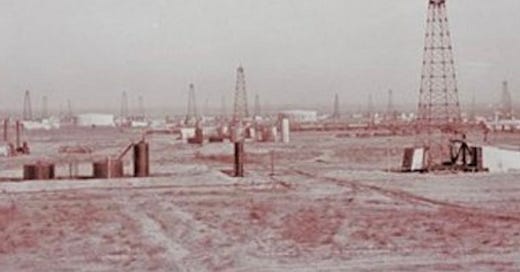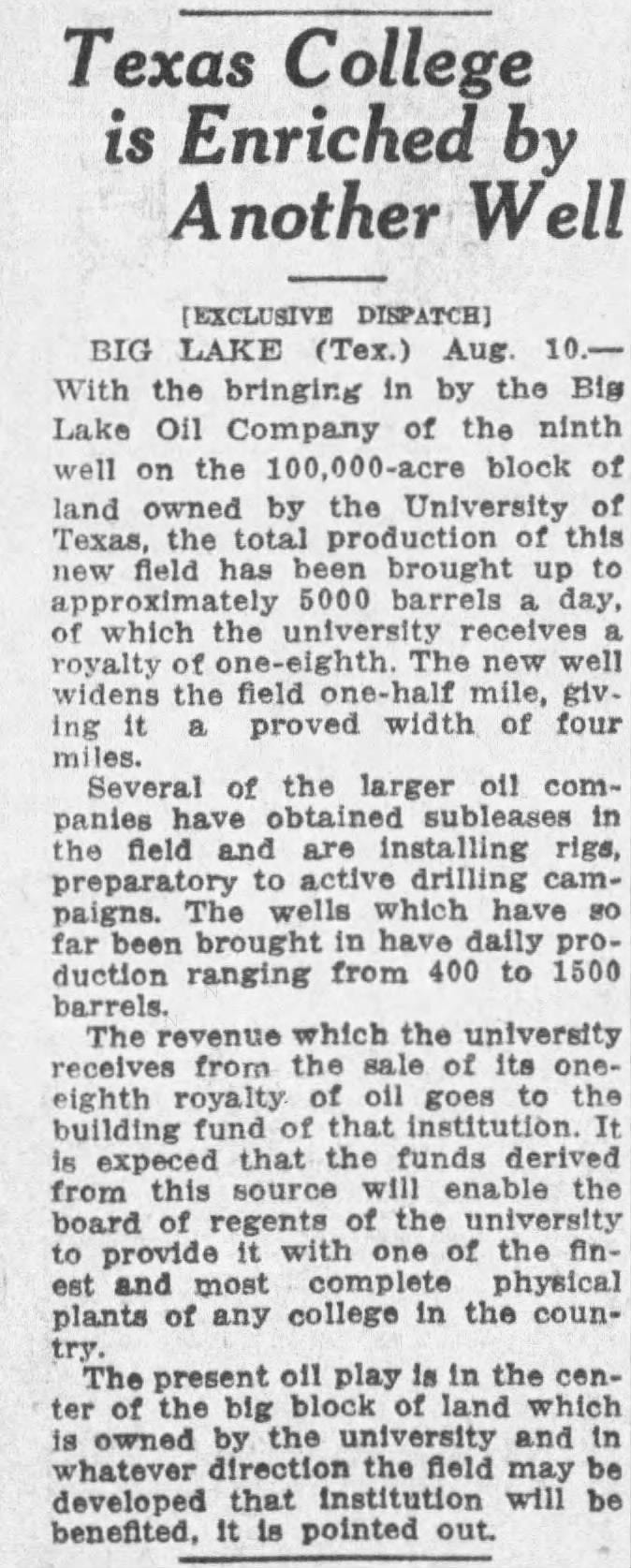Natural Gas and Other Energy News 100 Years Ago Today - August 11, 1924
Natural gas and other energy news from 100 years ago offers great perspective for discussing the issues today. It’s eye opening, given all we’ve learned over the last century.
This day a century ago:
University of Texas Strikes It Rich Again!
It doesn't get any better than this:
And, here is what Perplexity tells us happened to Big Lake Oil Company:
The Rise and Fall of the Big Lake Oil Company
The Big Lake Oil Company was founded in October 1923 by Pittsburgh wildcatters Michael Late Benedum and Joseph Trees. They acquired leases from the Texon Oil and Land Company, which had drilled the Santa Rita #1 well earlier that year, discovering the Big Lake oilfield - the first major field in the Permian Basin.
Over the next few years, the Big Lake Oil Company rapidly developed the field. By 1926, there were 74 wells producing over 32,000 barrels of oil per day. To house its growing workforce, the company built the town of Texon, a model company town with good living conditions.
In February 1929, the company sold controlling interest in the Big Lake field to Marland Oil Company. Over the following decades, as oil production declined, the town of Texon also gradually emptied out. Ownership of the town changed hands several times, with Marathon Oil Company ceasing maintenance in 1962.
By the 1980s, the Big Lake Oil Company had ceased to exist as an independent entity. The last remnants of Texon were gone by the early 2000s. Today, the Big Lake oilfield continues to be actively produced by various operators, but the company that discovered and developed it is no more.
The Truth About the Great Signal Hill Oil Field!
And, here's another oil field that brought huge economic development a century ago, this time to California, the Golden State, and it's still happening:
And, here’s the update from Perplexity on this one:
Overview of the Signal Hill Oil Field
The Signal Hill Oil Field, also known as the Long Beach Oil Field, is a large oil field located underneath the cities of Long Beach and Signal Hill in California. Discovered in 1921, it was one of the most productive oil fields in the world during the 1920s, with hundreds of oil derricks covering Signal Hill and adjacent parts of Long Beach.Some key facts about the Signal Hill Oil Field:
It is the eighth-largest oil field in California by cumulative production
Although largely depleted, it still retains around 5 million barrels of recoverable oil
The field has produced 963 million out of 3,600 million barrels of original oil in place
As of 2008, there were 294 active wells in the field, producing over 1.5 million barrels of oil that year
The field is currently operated entirely by small independent oil companies, with Signal Hill Petroleum being the largest operator
Overall, the Signal Hill Oil Field has been a major part of the history and economy of the Long Beach and Signal Hill area since its discovery over a century ago. Despite being largely depleted, it continues to produce oil today through the efforts of independent operators navigating the unique challenges of urban oil production.
#History #Oil #NaturalGas #Energy #Texas #California









I am ignorant of the specifics: When oil is burned, isn't it true that the primary heat-producing reaction is 2C + 2O2 => 2CO2 + Heat ? When natural gas is burned, isn't the primary heat-producing reaction exactly the same? Since scrubbers remove 99+% of all the impurities from the smoke in both cases, aren't coal and natural gas equivalent in the amount of CO2 produced per unit of heat? Where am I mistaken?